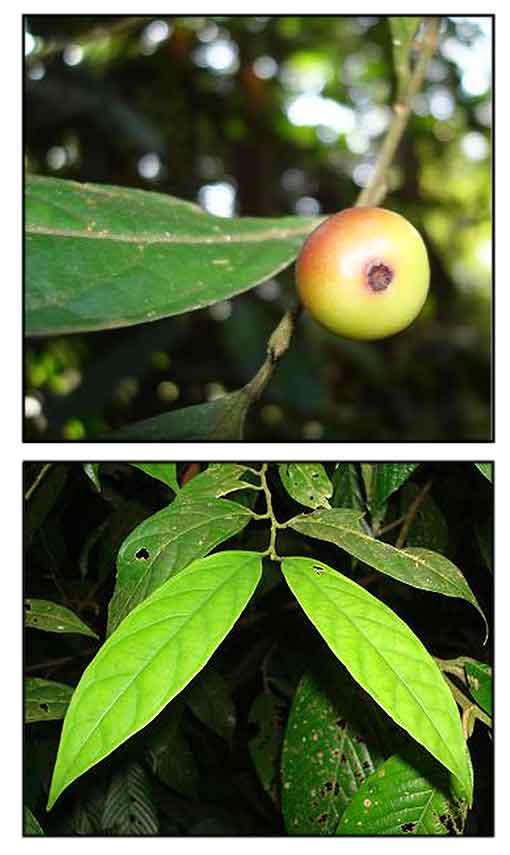
Family • Phyllanthaceae
Ragsik
Aporosa frutescens Blume
BASTARD RUKAM
| Scientific names | Common names |
| Aporosa frutescens Blume | Hauai (Manobo) |
| Aporosa fruticosa (Blume) Müll.Arg. | Ragsik (Bikol) |
| Leiocarpus fruticosus Blume | Bastard rukam (Engl.) |
| Aporosa frutiescens is an accepted species. KEW: Plants of the World Online | |
| Other vernacular names |
| BORNEO: Girak, Kalumanjat, Korosib, Lamog-lamog, Liposu gobuk, Monka-a, Rambai-rambai. |
| INDONESIA: Sassa lumbut, Sassa benar, Kayu si marlilin, Kayu si topu aek, Kayu malam. |
| MALAYSIA: Mesekam, Rutam utan, Sebasah. |
| MOLUCCAS: Ai mbalute. |
| MYANMAR: Liyo. |
| THAILAND: Khruen, Mai phlong, Som mao. |
October 2023
![]()
 |
| PHOTOS / ILLUSTRATIONS |
| IMAGE SOURCE: Photos (2): Aprosa frutescens - fruit and leaves / © Kwan • Nature Love You / Non-commercial use / click on image or link to go to source page / NatureLoveYou |
Additional
Sources and Suggested Readings |
• |
DOI: It is not uncommon for links on studies/sources to change. Copying and pasting the information on the search window or using the DOI (if available) will often redirect to the new link page. (Citing and Using a (DOI) Digital Object Identifier) |
| List of Understudied Philippine Medicinal Plants |
| New plant names needed The compilation now numbers over 1,300 medicinal plants. While I believe there are hundreds more that can be added to the collection, they are becoming more difficult to find. If you have a medicinal plant, native or introduced, to suggest for addition to the compilation, please email the info: local plant name (if known), any known folkloric medicinal use, scientific name (most helpful), and, if possible, a photo. Your help will be greatly appreciated. |
• |
 |


